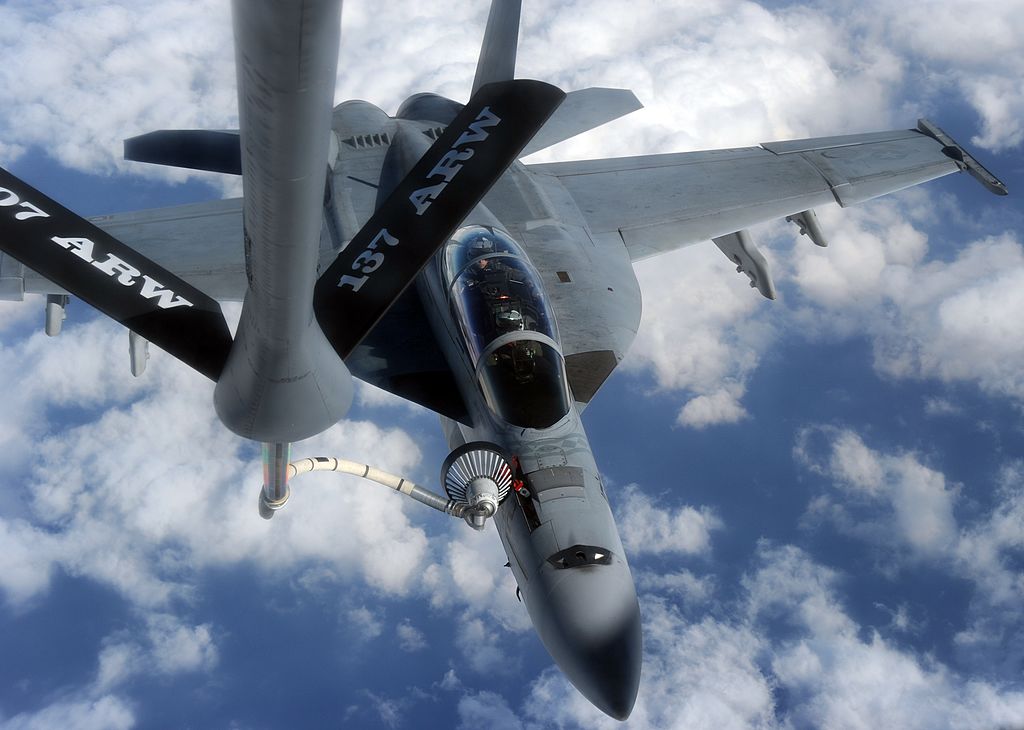A Boeing Co. drone made aviation history in the skies above the Midwest on Friday by successfully refueling a U.S. fighter jet in midair for the first time.
The Navy F/A-18 Super Hornet connected briefly to the drone prototype, known as a MQ-25 Stingray, via a hose transferring jet fuel, CBS News reported.
According to a news release issued by Chicago-based Boeing, the Super Hornet approached the drone from behind, and the aircraft hovered within 20 feet of each other throughout the refueling process. The Navy posted video of the historic interaction to Twitter.
Dave Bujold, Boeing’s MQ-25 program director, said during a Monday news conference that the drone successfully transferred 325 of the 500 pounds of fuel available during the roughly 4.5-hour test flight, conducted from MidAmerica St. Louis Airport in Mascoutah, Illinois.
“Unmanned systems alongside our traditional combatant force provide additional capability and capacity to give our warfighters the advantage needed to fight, win and deter potential aggressors,” Capt. Chad Reed, program manager for the Navy’s Unmanned Carrier Aviation program office, told CBS News.
“The MQ-25 is that first step towards a future where the carrier-based fleet is augmented by unmanned systems,” Reed added, calling the drone a “force multiplier” that could more strategically redistribute Navy strike fighters and pilots currently assigned to refueling duties.
The Navy and Boeing confirmed they plan to conduct a similar test on an aircraft carrier later this year, the network reported.
“This flight lays the foundation for integration into the carrier environment, allowing for greater capability toward manned-unmanned teaming concepts,” Rear Adm. Brian Corey, head of the Program Executive Office for Unmanned Aviation and Strike Weapons, said in a Monday statement obtained by the U.S Naval Institute News. “MQ-25 will greatly increase the range and endurance of the future carrier air wing – equipping our aircraft carriers with additional assets well into the future.”








